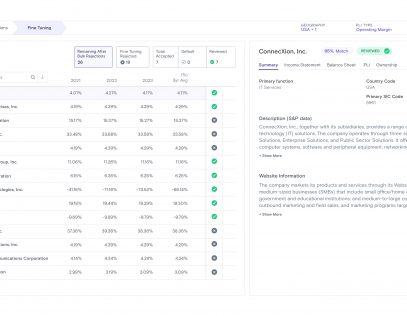It is interesting to see that the IRS is continuing to press additional inquires into Eaton’s transfer pricing. A recent document request is asking for the annual personnel evaluations for the 2017-2019 years inclusive of 25 Eaton employees—the majority, if not all, are resident and employed in the European Union. The IRS claims that there is information contained within the reviews that is pertinent to the audit of the company that cannot be obtained in any other fashion.
It is this point that is of interest. Eaton has answered over 400 Information Document Requests, “IDRs” with over 13 GB of data, over 44,000 pdf pages, and numerous related Excel files. This is in addition to in-person IRS visits to six facilities in four cities, and 40 transcribed and under-oath interviews of Eaton employees and service providers. To put this in practical terms, if printed, the papers would be a stack exceeds 18 feet and weighs over 440 pounds. I’m getting tired just thinking about moving that much stuff.
Eaton has offered to provide the IRS with written explanations of various employee job functions, and where possible, interviews with the employees and their supervisors (although some of the personnel are no longer employed by Eaton). To date, the IRS has not availed itself of this offer and has not provided any explanation as to why this alternative is not acceptable.
Procedurally, the IRS has resorted to summonses to try to obtain this information under IRC §6038A or IRC §7602, but in either case, the records requested are not covered within the relevant statures of information required to be maintained as described in each code section. Further to this issue is that the requested information pertains to personnel records and with it a higher relevance standard as defined by the court to obtain this information.
While the legal battle continues, the court previously ruled that the service did not provide a relevant reason for needing these records, other than a vague assertion that the evaluations likely contained information on Eaton’s transfer pricing methodology. The court held that the services assertion was “purely speculative,” and the IRS had not “persuasively demonstrated the relevance of [the] performance evaluations.” In essence, the court held that the service was fishing without bait in a potentially empty pond.
I imagine that anyone reading this has had the opportunity to partake in one or more performance evaluations. I am reasonably certain that within those evaluations, specific information pertaining to complicated intercompany tax issues such as product pricing and transfer pricing methodology are not included within said performance evaluations. The entirety of the pricing methodology is company confidential at minimum and of no practical need of disclosure to Human Resources.
Not to mention, the request puts Eaton in a no-win situation. If Eaton complies with the IRS’ request for information about its employees, it will violate the European Union’s General Data Protection Regulation (“GDPR”). The information within the performance evaluations is inherently personal information covered by the GDPR. Providing the requested information would subject Eaton to a potential fine in excess of $830 million. Of course, there is also the exposure beyond the EU fines of private litigation by the affected people for the disclosure of their information.
So, why the need? Perhaps the agents envision finding the code name of a super-secret global transfer pricing project that exposes all of the tentacles of their activities. Maybe they believe they couldn’t uncover corrupt transfer pricing strategies in the detailed line operations of each department throughout the organization and in-depth calculations in the 44,000-plus pages, 40 transcribed and under-oath personnel interviews, and 13 GB of data and Excel files previously provided, because they only exist within the company’s performance evaluations.
While anything is possible, the real question is, is it probable that there would be significant information buried in an evaluation that would unlock a global transfer pricing strategy? Possible? Well, anything is possible. Probable? Less likely than the snowball in Hades.









